Beware of anti-SEO studies that misguide your marketing strategy
Explore compelling counterarguments and data-driven insights on the role of search in an integrated marketing strategy.
In March 2024, SparkToro and Datos published a study revealing insights about “where users spent time vs. where traffic referrals originate.” It has been seen by over 250,000 people since being released.
SparkToro Founder Rand Fishkin later wrote a clarifying article concluding that you should never focus on SEO, stating:
“The only reasonable move is to invest in the sources of influence to which your audience pays attention: social accounts they follow, YouTube channels they watch, podcasts they listen to, websites they visit, events they attend, etc. Anything else is missing out on opportunity.”
At a glance, I thought the data was insightful. But as I dug deeper, I found that the insights seemed misleading.
Fishkin holds enormous sway over some marketers. If you’re one of the thousands who read this study and analysis, I urge you to read this article before leaving SEO out of your marketing mix and overly focusing on social channels and Threads.
Study overview
Based on the data’s story, you might conclude the following:
- Search engines drive the most traffic, but you can’t generate any business results, so focus on marketing on sites with the most traffic and audience.
- Social is the largest count of visits, so focus the budget there.
- Threads is the fastest-growing visited site, so pay attention to it.
The first sentence in the report stated:
“‘Most of our site’s traffic comes from Google, so most of our digital marketing efforts and spending should be on Google, too.’ – An absolutely terrible way to invest in marketing.”
This sets the tone for how a reader should interpret the report’s data.
The “Site Categories That Sent Referrals vs. Received Visits” chart is a great summary of the data. It shows that visitors visit sites to learn or engage on that platform, while search engines drive more traffic than the other sites combined. Social is the top-visited site category.
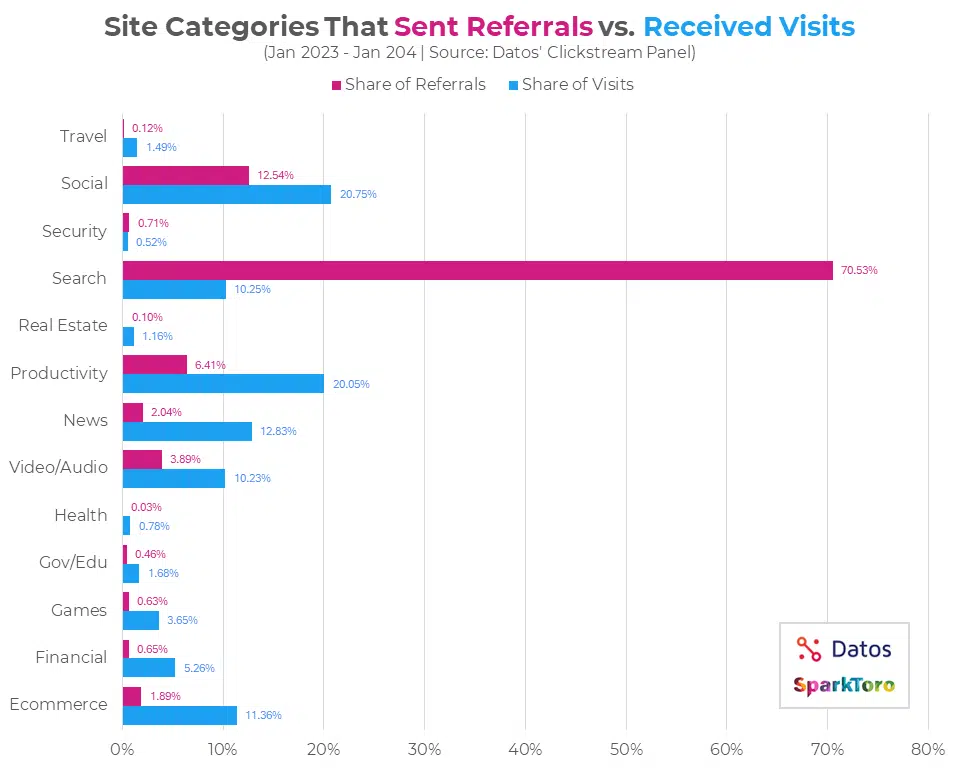
The study further demonstrates that Threads’ traffic is growing faster than other top-visited sites
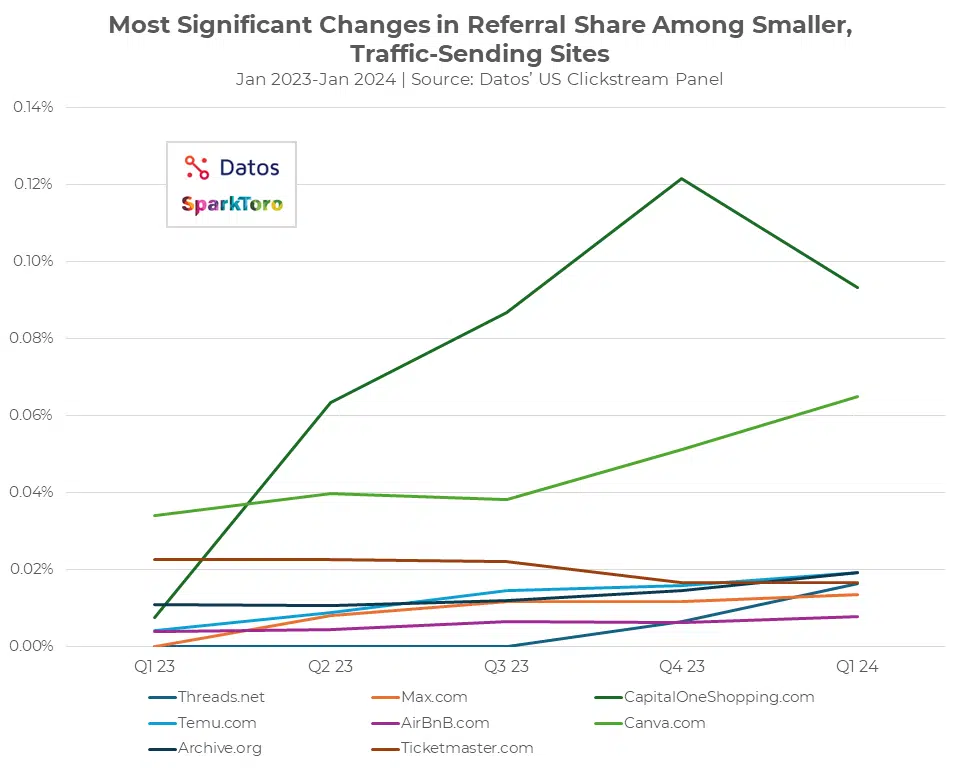
Now, the comment from Fishkin above becomes important:
“The only reasonable move is to invest in the sources of influence to which your audience pays attention: social accounts they follow, YouTube channels they watch, podcasts they listen to, websites they visit, events they attend, etc. Anything else is missing out on opportunity.”
So we’re being encouraged to invest in Threads and social over SEO. But does it work?
SparkToro follows this mix – and appears to be failing
If excluding SEO and focusing only on social media worked, why is SparkToro losing traction and growth?
SparkToro is Fishkin’s tool for audience research. It grew almost entirely because of Fishkin’s following and push on social media. This following created a short-lived interest that started to decline heavily in 2024.
The tool only ranks in the top 3 for brand keywords like “SparkToro” or “audience research tool,” which have low interest and an average monthly search of 170.
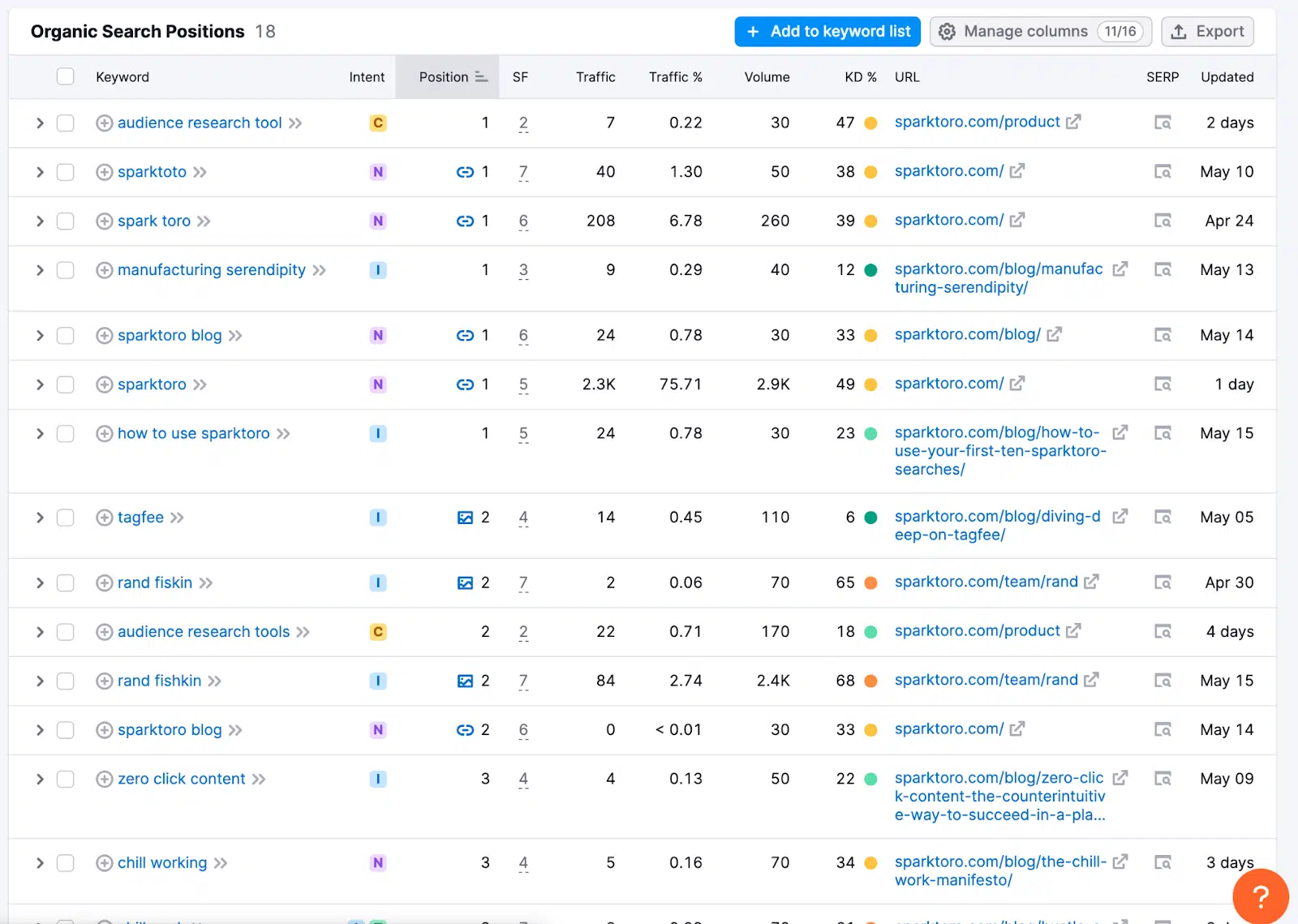
Google Trends shows a 41% decrease in brand search volume for “SparkToro” in 2024 from 2023. Looking at the SparkToro pricing page on archive.org, the lowest-paid package’s pricing in April 2022 was $150/month and is $50/month as of 2024.
A decrease in price and brand search shows a declining user base and a need to attract or retain users. Overall, the tool gained interest but then started to decline.
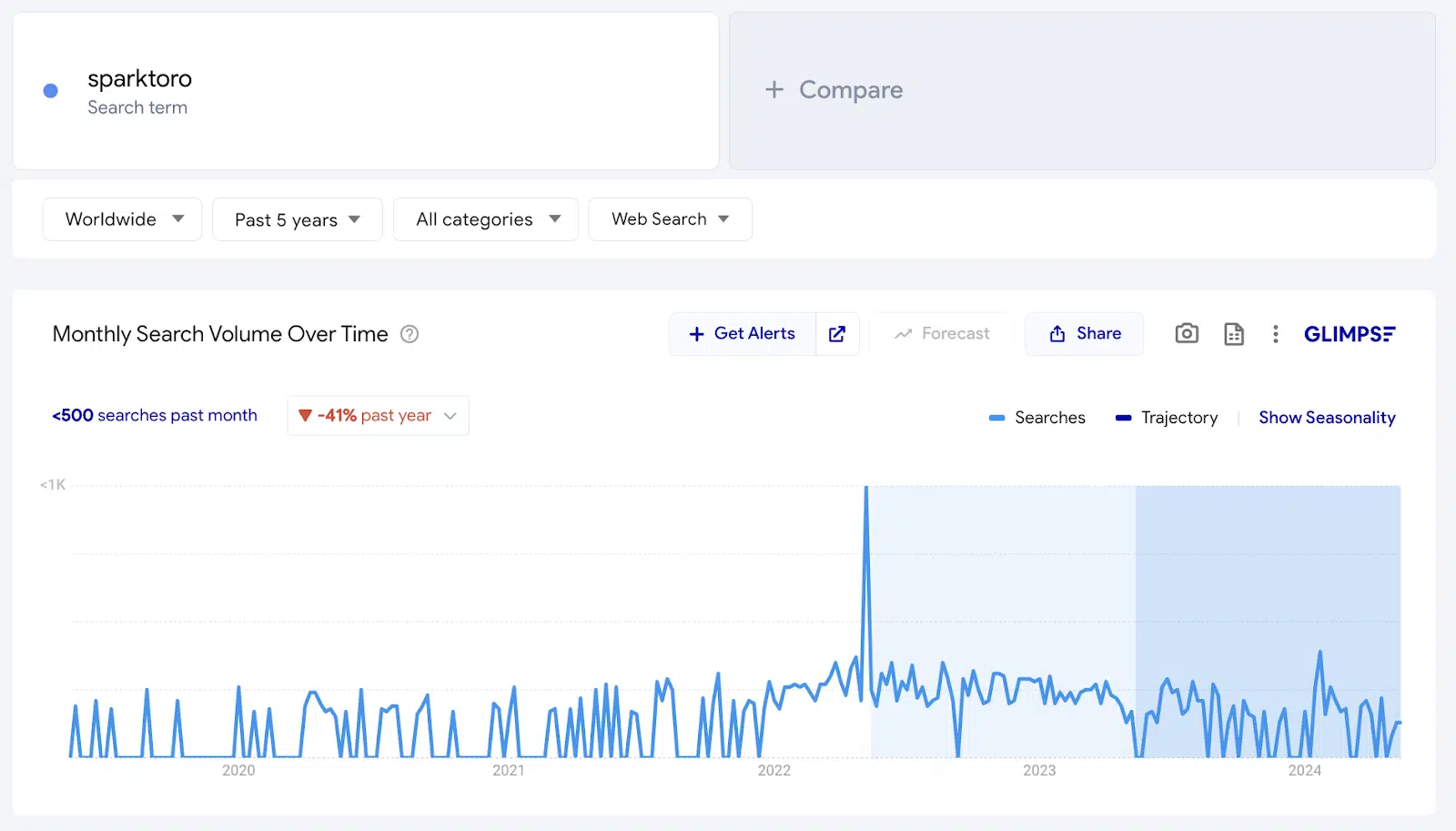
If focusing on social works, shouldn’t SparkToro be doing better?
SparkToro seems to be underperforming right now. However, the team may be playing a long game and focusing on designing an entirely new category for “audience research tools.”
Search volume for the keyword “audience research tool” started to grow after SparkToro launched in 2018 and increased by 33% in the past year. These are the telltale signs of an emerging category.
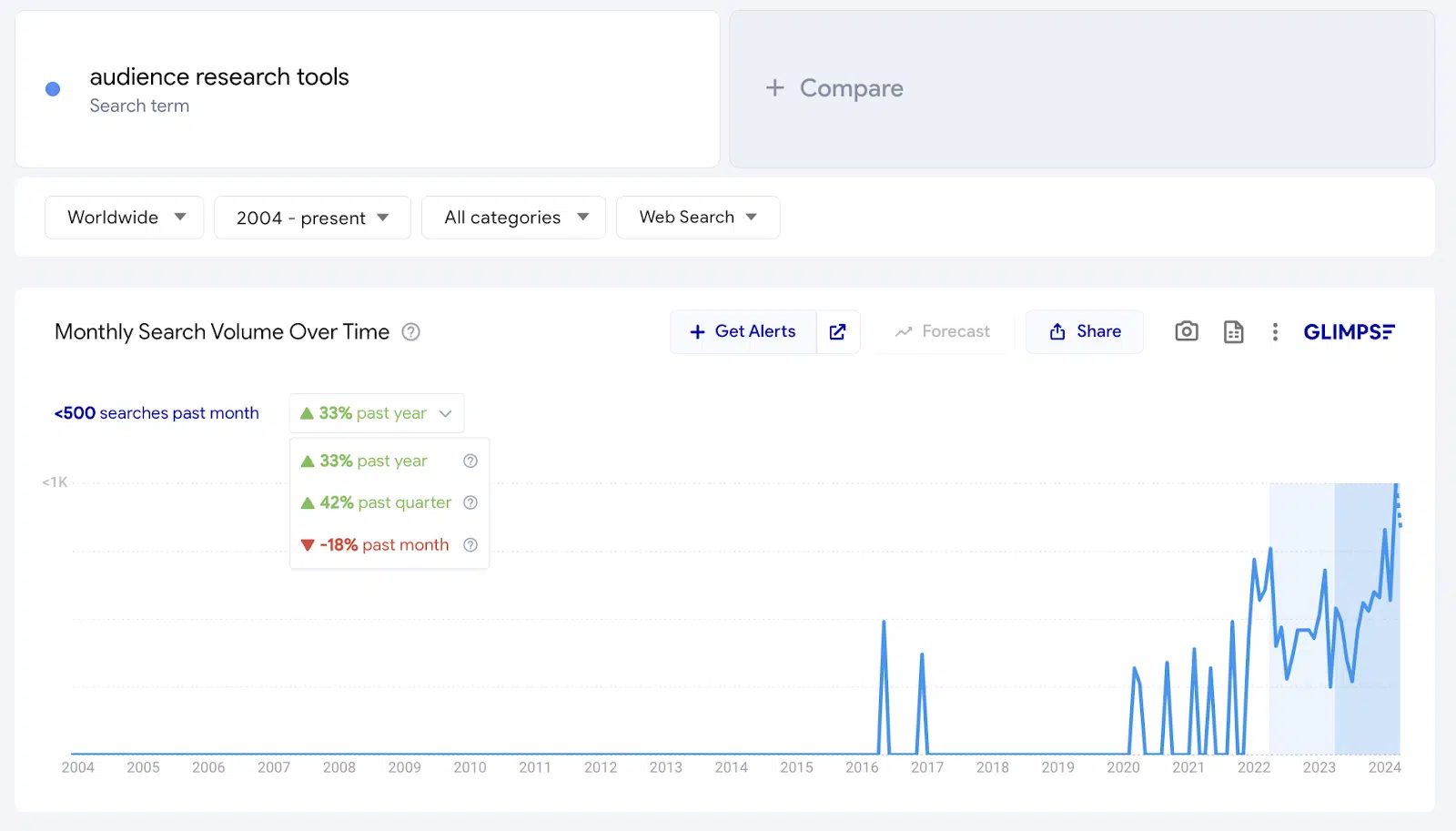
“Audience research tools” is a keyword someone would use to find a tool for “audience research.” This keyword has high buyer intent for software that provides insights into where a brand’s audience lives online.
SparkToro is actually doing SEO but trying to create demand for the keywords it already ranks for. It ranks in Position 1 for the keyword “audience research tools,” according to Semrush.
Users from non-brand searches are looking for something specifically to solve a problem and understand how products or services relate to the solution they need. This is a buying intent.
But if you are not creating a new market category, why not rank for high-search keywords in your existing category with buyer intent?
Can search work in new market categories?
SEO can drive growth by ranking for adjacent market segment keywords in new market categories but solving similar problems for that audience.
Adjacent markets are ones where your product, service or idea solves a similar problem or opportunities with a different audience.
For example, SparkToro allows you to build a list of contacts on press sites with overlapping audiences. The site could then create an integrated PR and SEO campaign to help corporate PR or communication professionals find audiences related to their target publications.
In this scenario, they could create a campaign around “journalists seed list audiences” where they build a landing page with a list of contacts at CBC or Fox.
The purpose of this page would be to help comms professionals looking for contacts at one publication convert and build a list of all publications and platforms where the same audience visits.
Although these individual keywords have low search volume (e.g., “CBC journalists lists has 10-100 avg. monthly searches), creating these across hundreds of publications and then doing a PR topic tour to explain how comms professionals can improve campaign performance by these targeted publications.
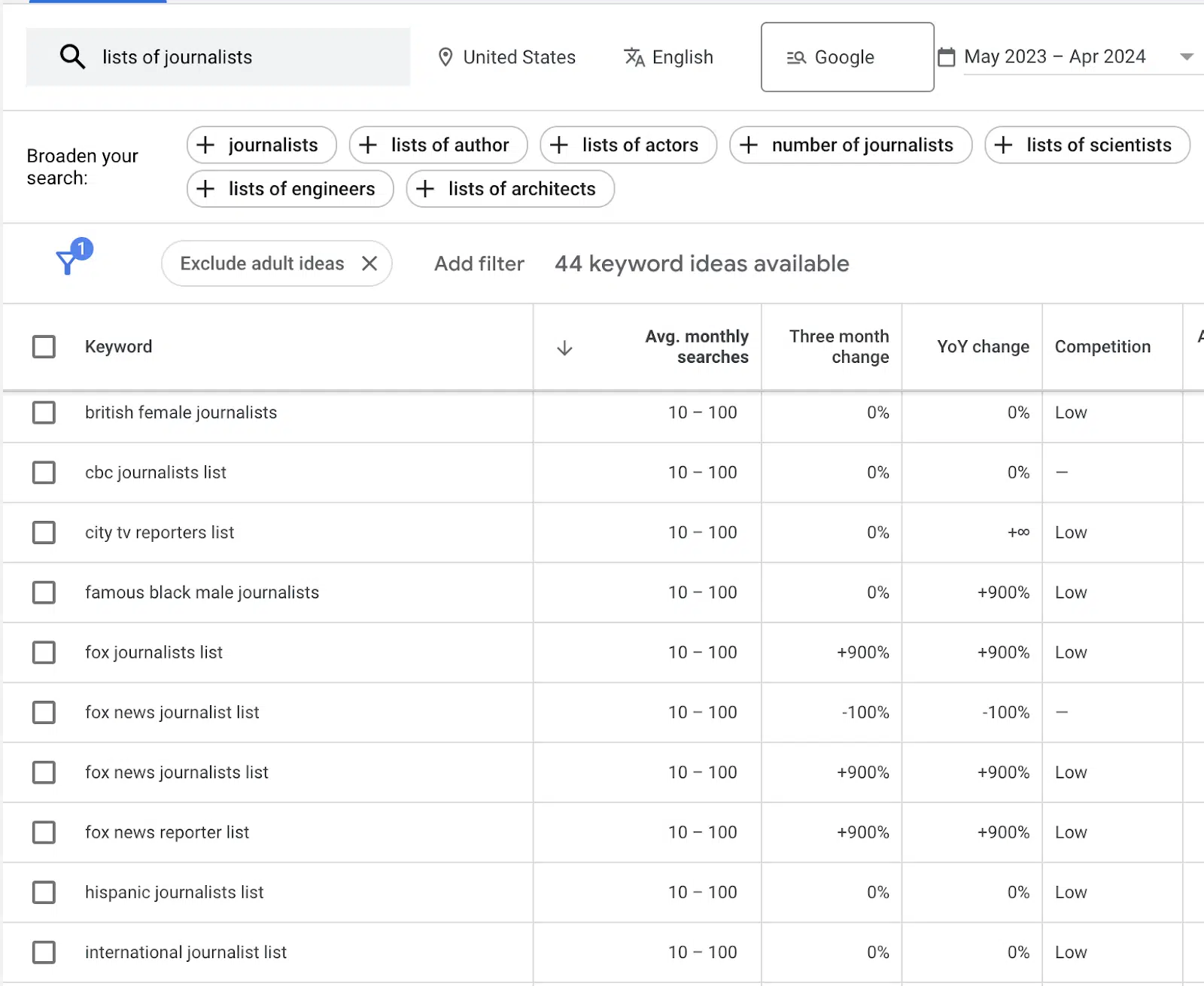
The campaign could look something like this:
- Funnel: Drive demands around finding the audience for Fox or CBC, then sign up for a new tool or feature specific to finding audiences for these major publications or journalists.
- On-page: Create landing pages around each media outlet or an “audience profile kit” of sorts. This landing page could highlight all the places the audience visits for those publications, contacts, audience demographics, etc.
- Search engines: Ranks the audience scorecard for “CBC journalists list” or other publication names.
- PR topic tour: Have an expert appear on podcasts or webinars to talk about how to find the audiences for these publications and create a study showing the audience’s path.
Searching for an audience by specific groups of journalists would make targeting more precise, as people often read only certain sections, like business or lifestyle. This data could be useful on the landing page.
These pages’ content could also be a new feature or widget for the site, showing that keyword data can be used to understand the audience’s needs and test new features.
You could argue that this type of SEO may not be needed for a product-led growth strategy. However, product-led growth focuses on technical users finding specific applications and sharing how they solved a problem with the tool.
People with similar issues will then see how they solved the problem and do the same. This type of SEO strategy gives technical users (e.g., media list builders) in a corporate communications role a way to use a seed list to find other relevant audiences.
This type of campaign provides unique value in a product-led growth strategy (i.e., a technical audience uses and loves the product, so they share it with other technical users). The page could provide an asset that technical users, PR or media relations people, in this case, could easily share when someone needs a list of sites and contacts for an audience.
SEO does have applications in new markets and with product-led growth, but the amount of traffic in these markets may not be as robust as in emerging or established markets.
What about search marketing in emerging or mature markets?
As a market matures, buyers use search engines to learn more about the products, services or ideas in that category.
I like to use the innovation adoption curve to understand and plan keyword targets and media communication strategy since as technology or innovation adoption grows, so does search volume.
- Innovators: Technical enthusiasts who are looking to solve new problems.
- Early adopters: Visionaries who see a big opportunity when solving problems.
- Early majority: Pragmatic users who want to solve problems but need proof it works.
- Late majority: Skeptical about technology or changes.
- Laggards: Do things in the market standard.
Ebikes, for example, are an emerging market in the U.S., with some states and cities having a much higher adoption rate than the national rate. As more people use and talk about using ebikes, the demand and Google searches for the product grow.
A recent case study I wrote for Search Engine Land about the ebikes category illustrates this.
The keyword “ebike” has between 100,000 to 1 million average monthly searches with a +900% increase YoY (Google keywords planner).
Keywords planner aggregates multiple keywords into this search volume beyond “ebike” so Google Trends can provide another perspective on growth. But Google Trends show a growing interest in the category with over 17% increase in search in 2024 from 2023.
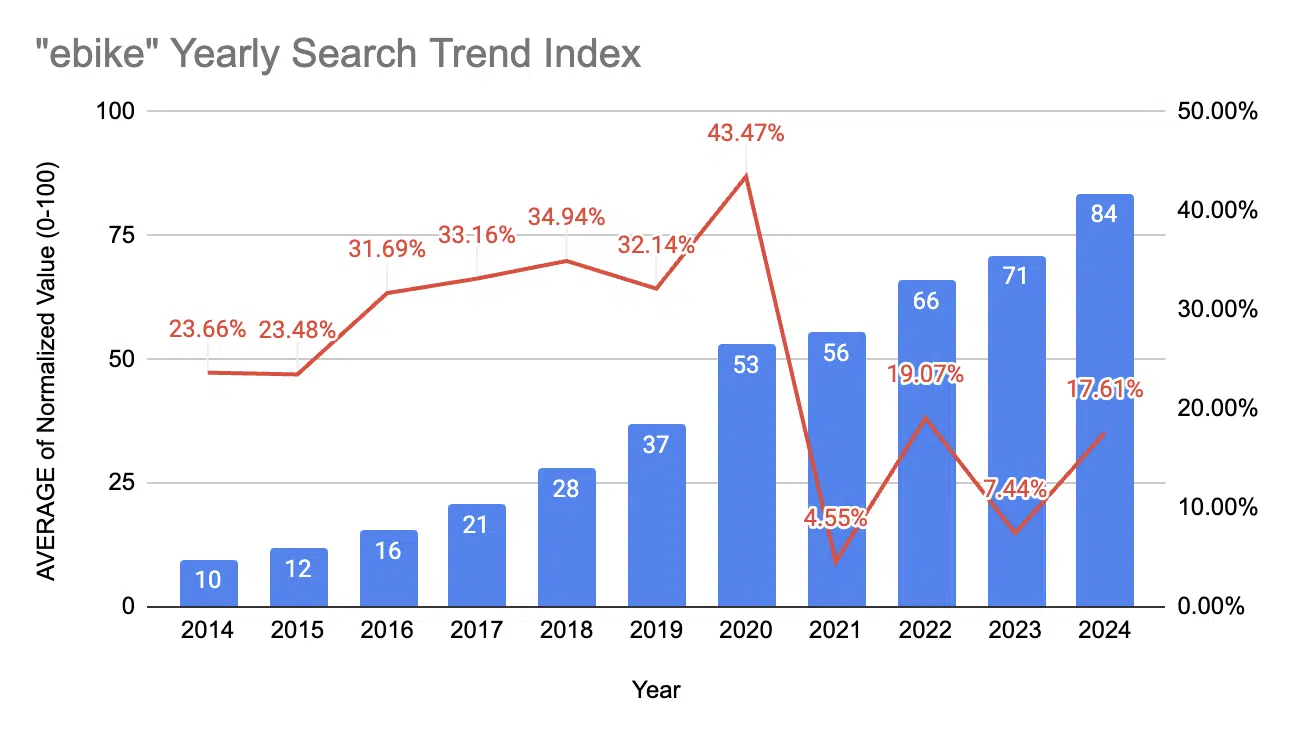
For this rapidly growing term, the brand has spots in the shopping feature, paid ads and standard Google blue listings.
The standard organic rankings could get a 35% click-through rate (CTR) alone, but taking up three key positions could drive up CTR due to brand presence on the page.
The CTR could also be improved since the brand’s ebike has strong brand recognition through its PR efforts.
Let’s use some rough numbers to estimate the traffic for this keyword that a person would use when looking to buy an ebike.
- 300,000 monthly searches.
- 40% CTR.
- 120,000 monthly clicks.
- Last-click conversion rate of 5%.
- 6,000 sales per month.
This doesn’t include the return visits with latent conversions (e.g., non-last click conversions) for those shopping around during the first click.
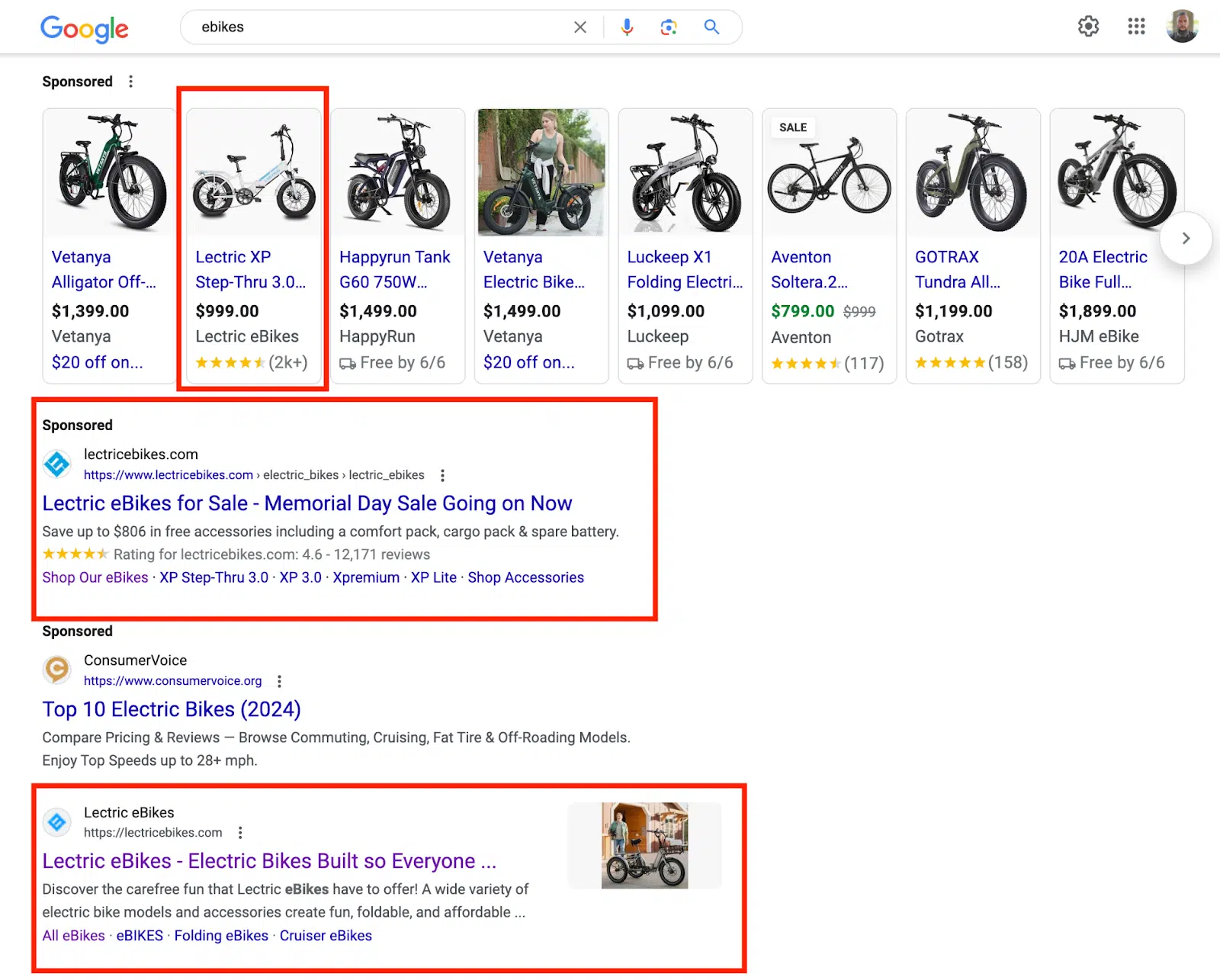
Why would an ebike brand not want to have the same dominance for this keyword as Lectric?
An insightful conclusion
Target each stage of your audience’s journey with the right messaging based on the medium they are using and how they use it, using an integrated PR and SEO strategy.

This graph above tells an important story about designing your marketing strategy, and this data point is an important part of that story:
- “70% of online shoppers who are also active weekly on social media report using Google Search to inform or evaluate purchases that caught their attention on social media.”
Thus, the audience may start their journey on social media sites, but they will also use search engines as they progress to make buying decisions.
This means that a budget should be invested in each stage of the audience’s online journey, including using PR and SEO techniques.
Contributing authors are invited to create content for Search Engine Land and are chosen for their expertise and contribution to the search community. Our contributors work under the oversight of the editorial staff and contributions are checked for quality and relevance to our readers. The opinions they express are their own.
Related stories